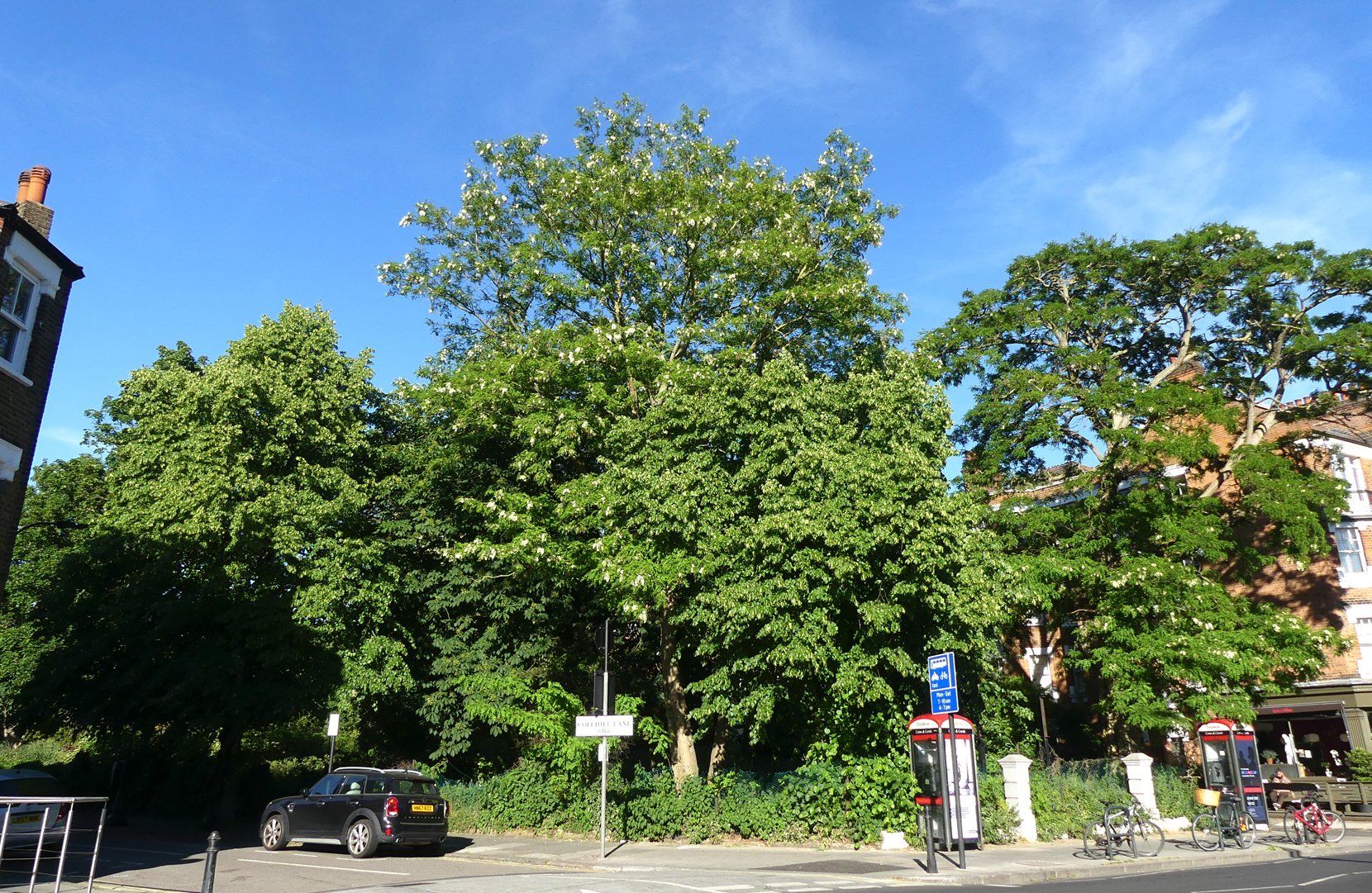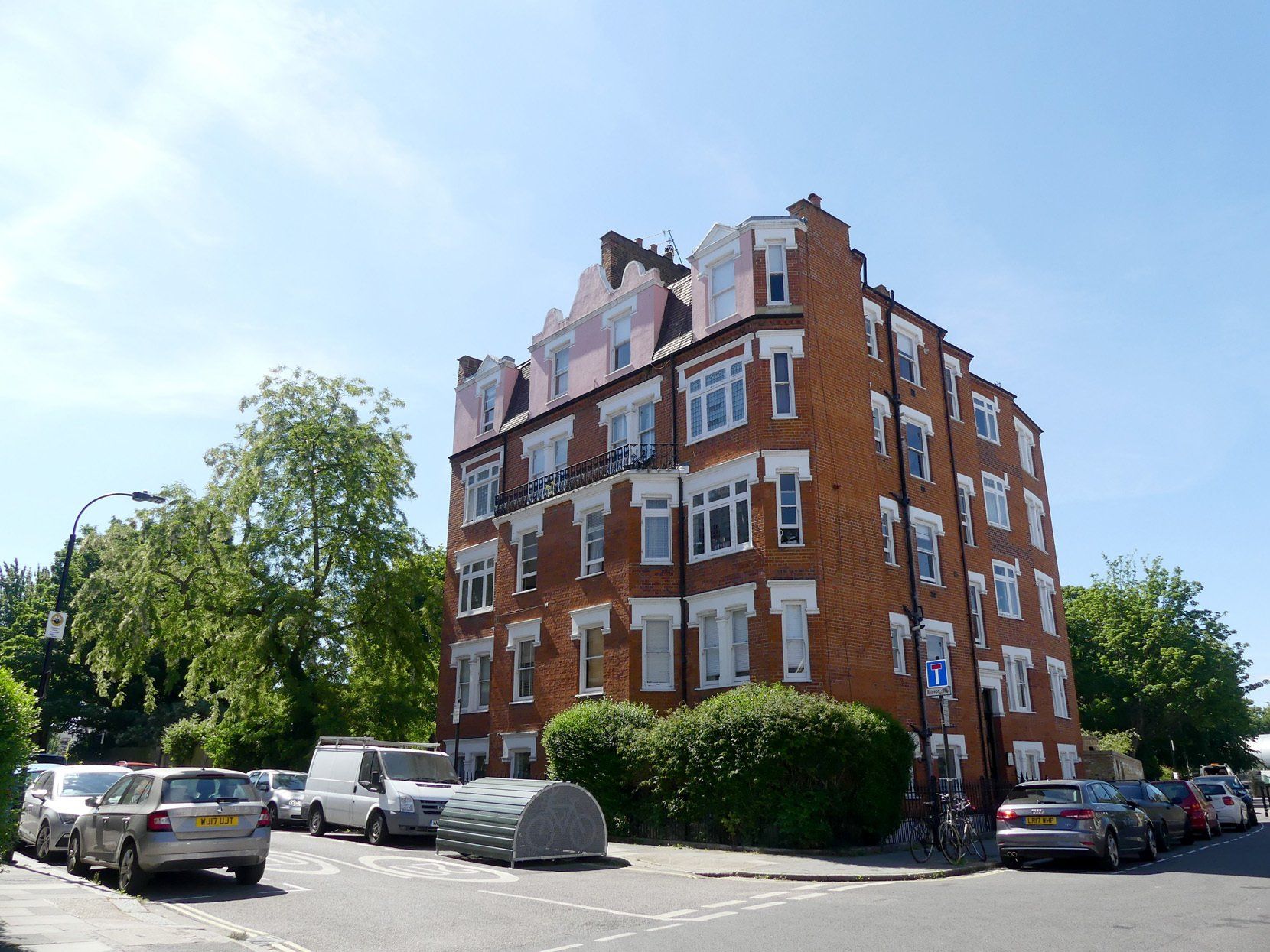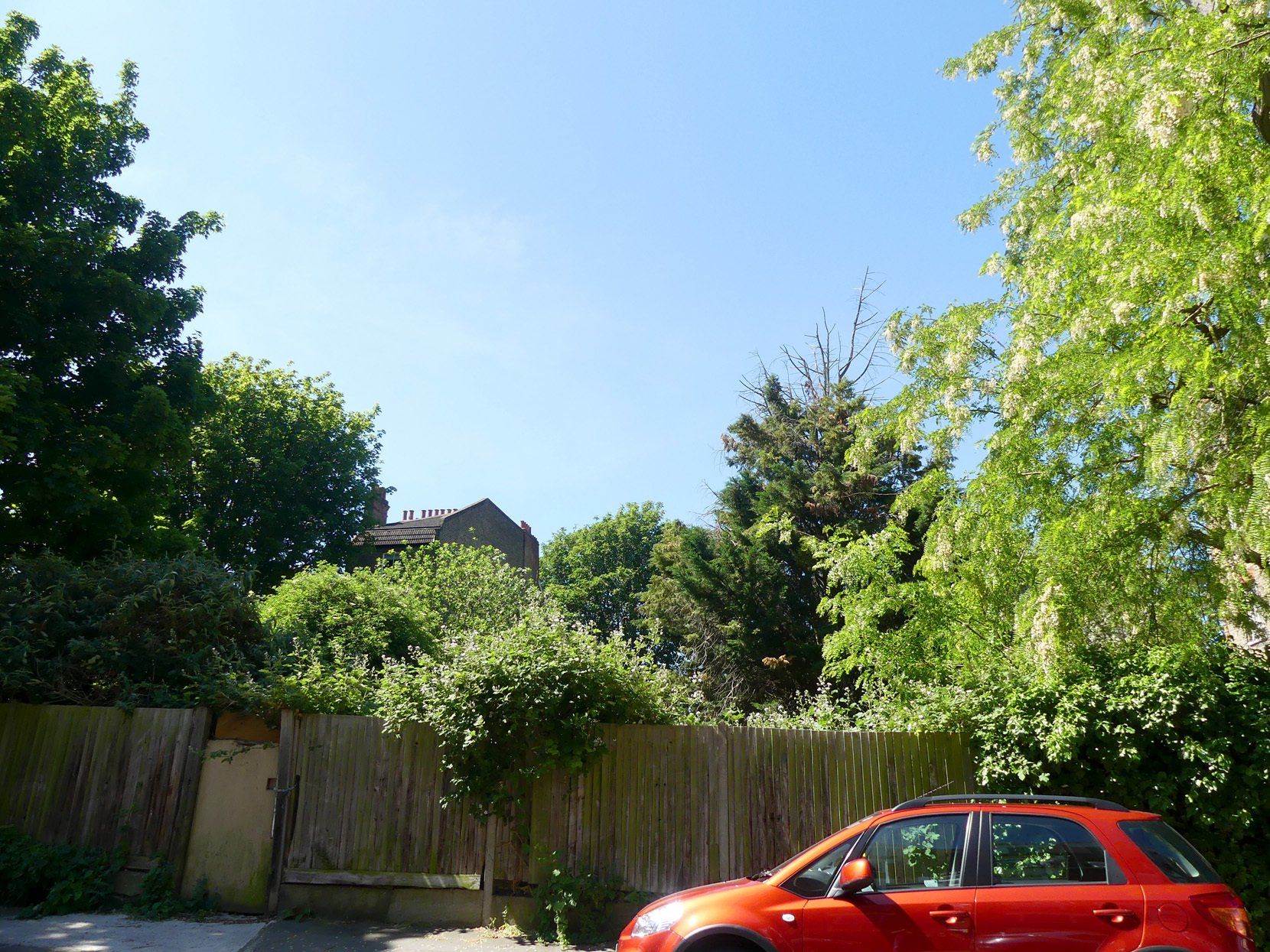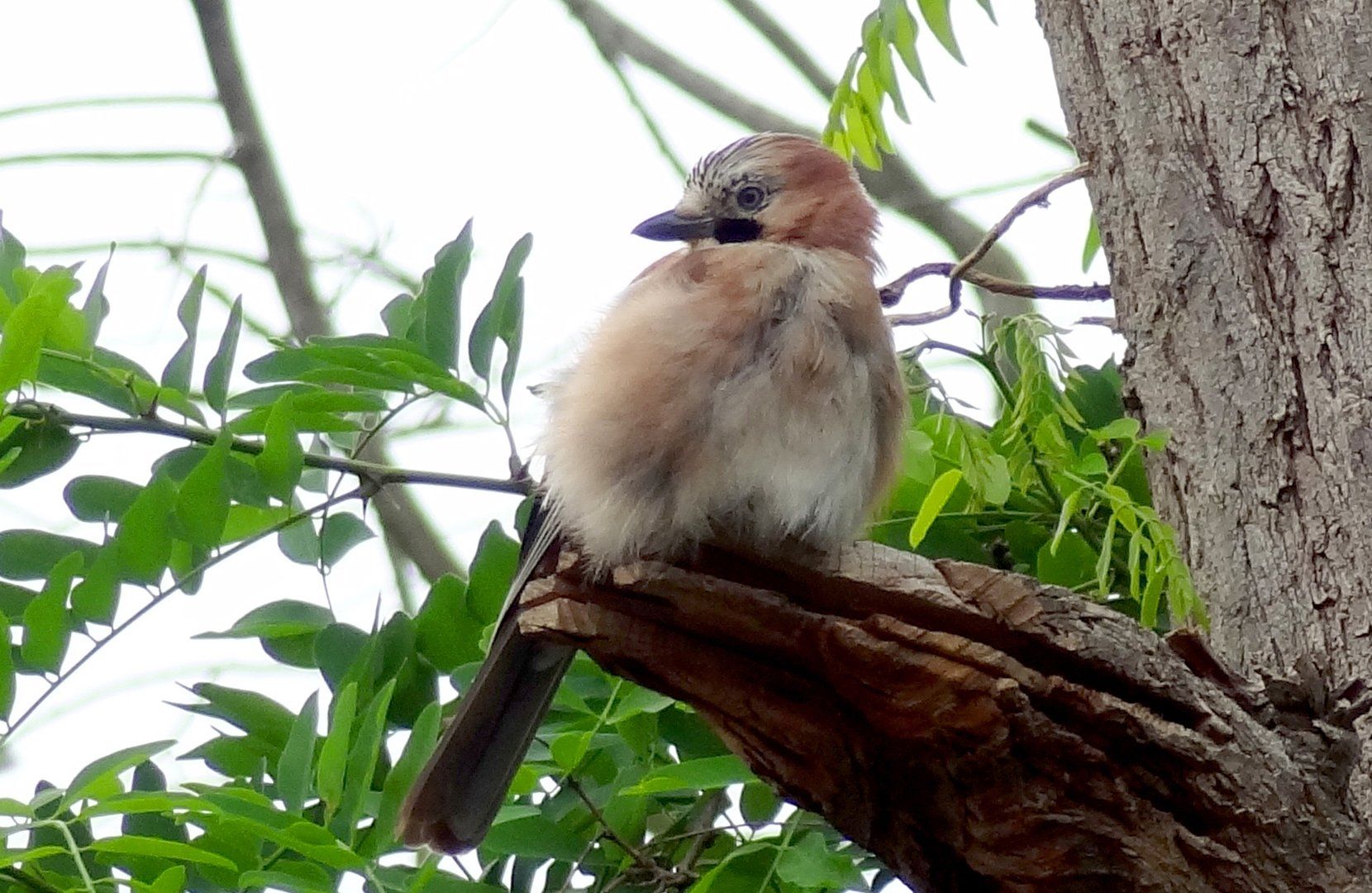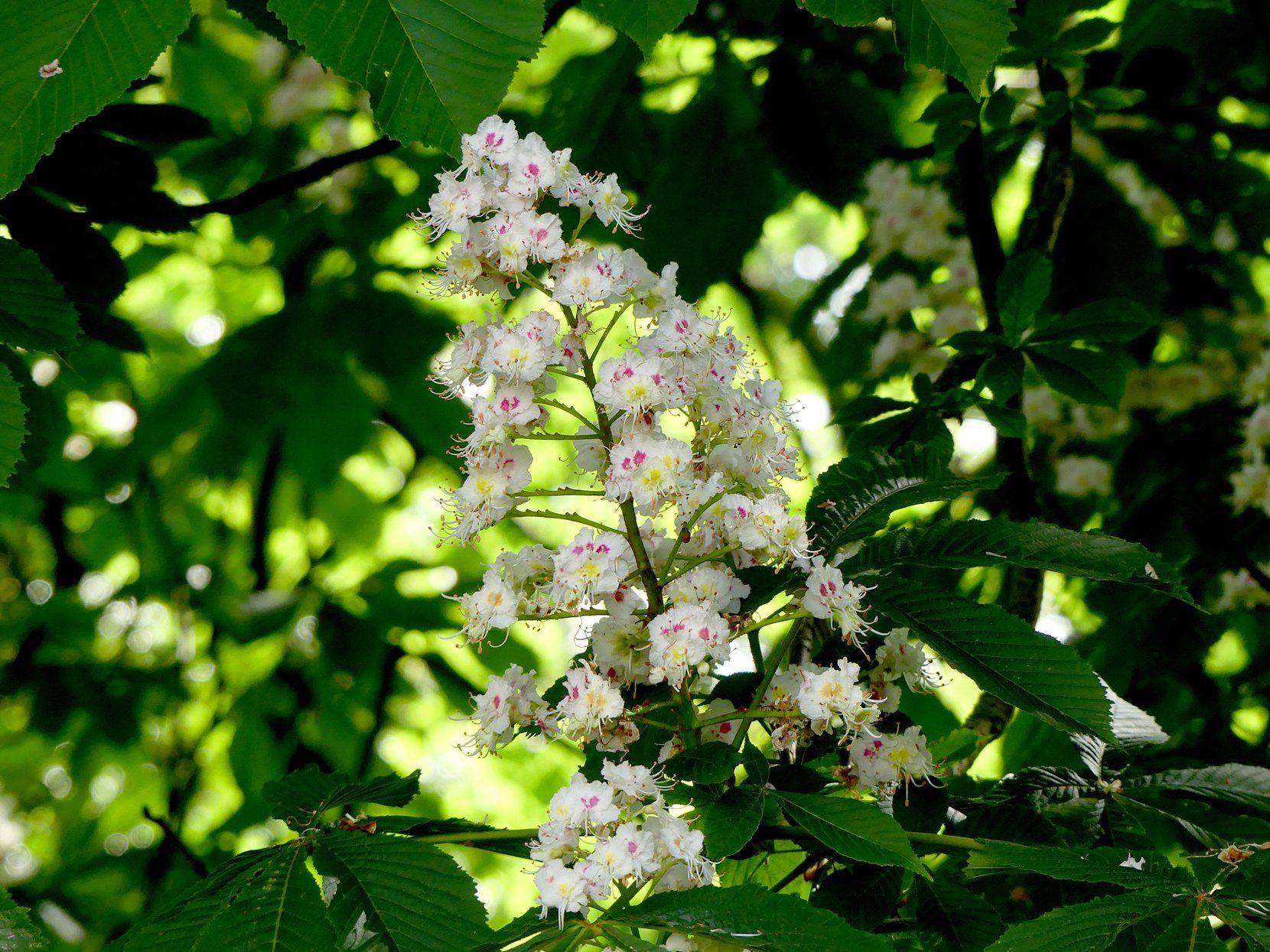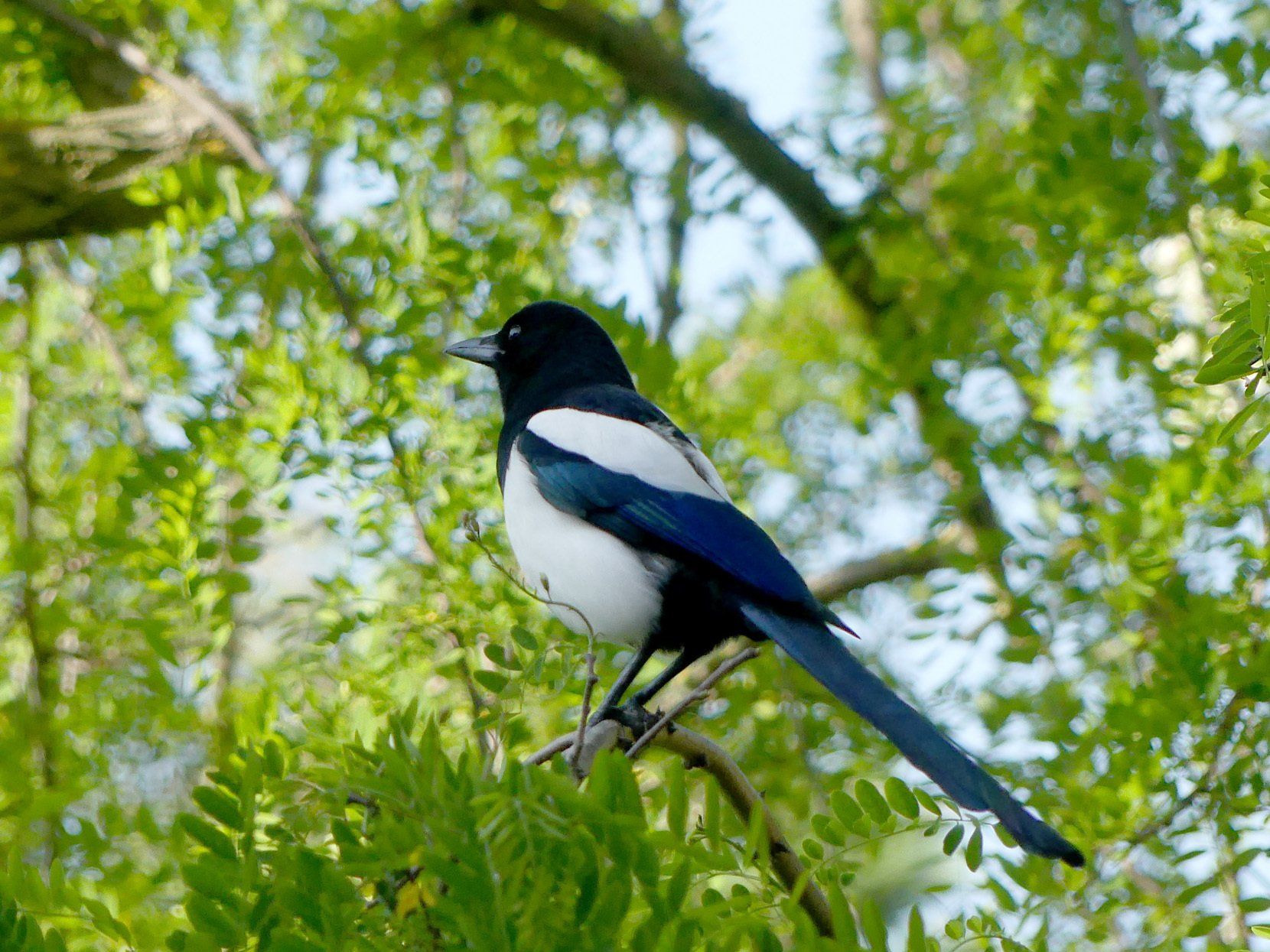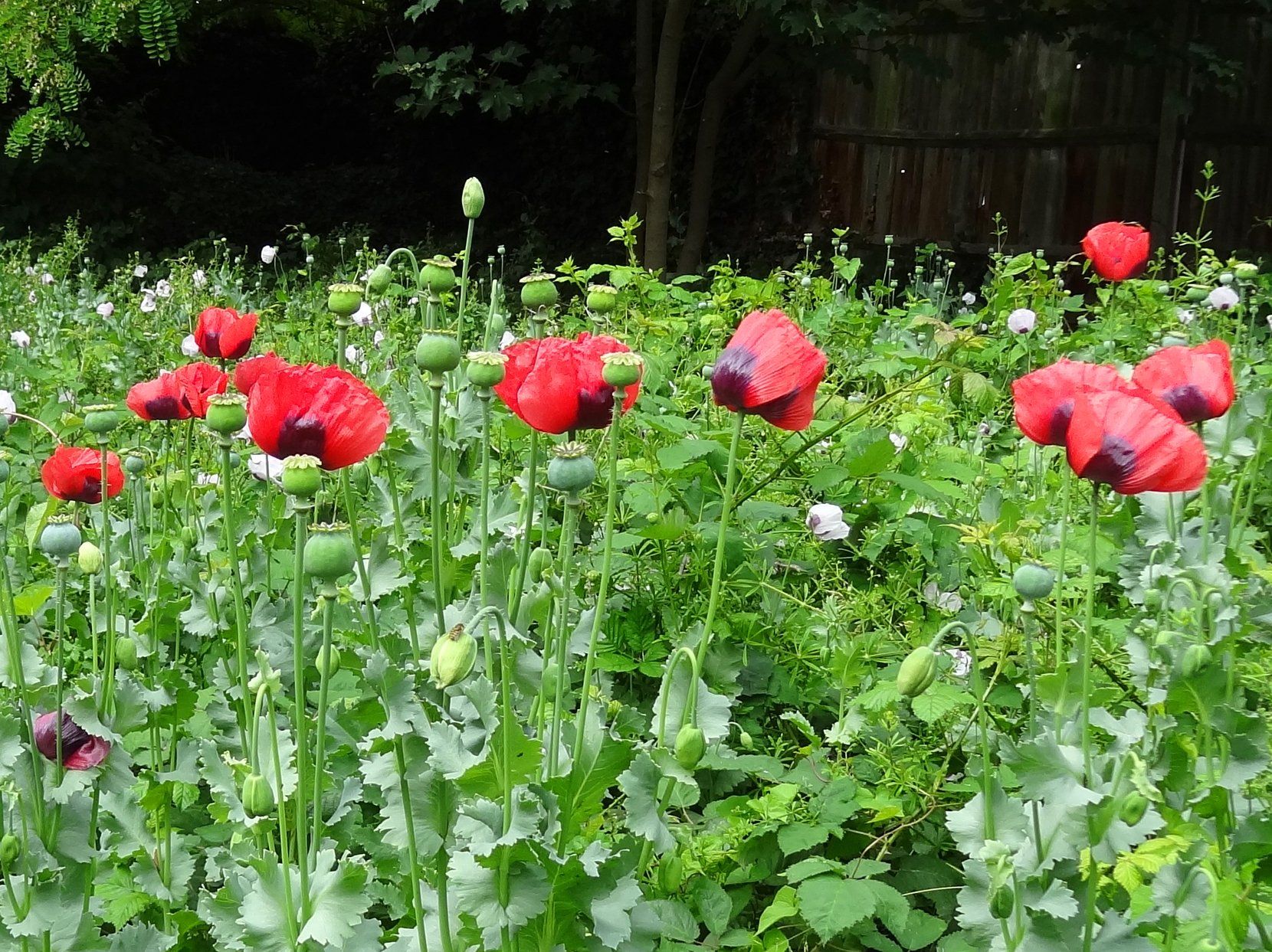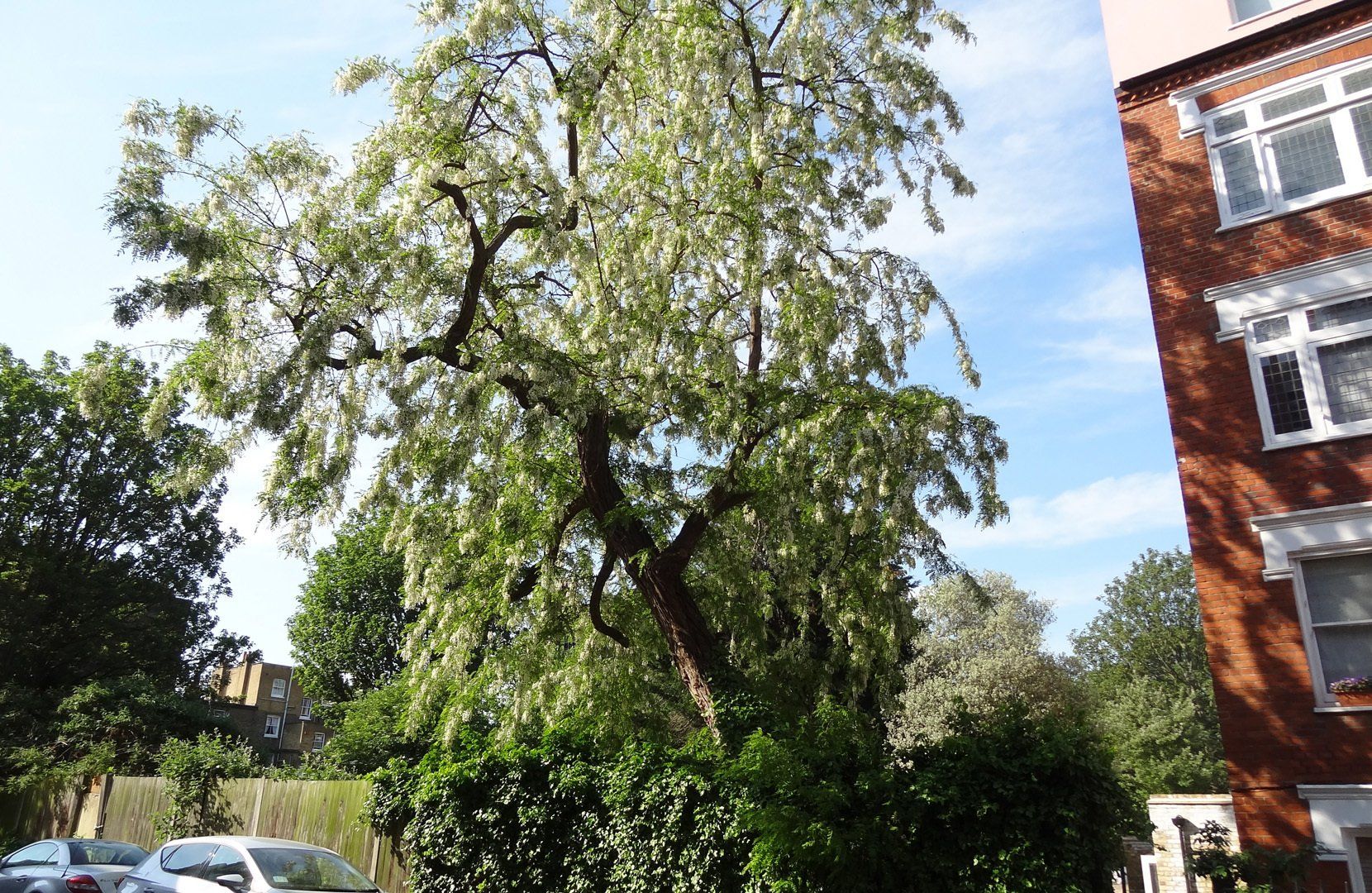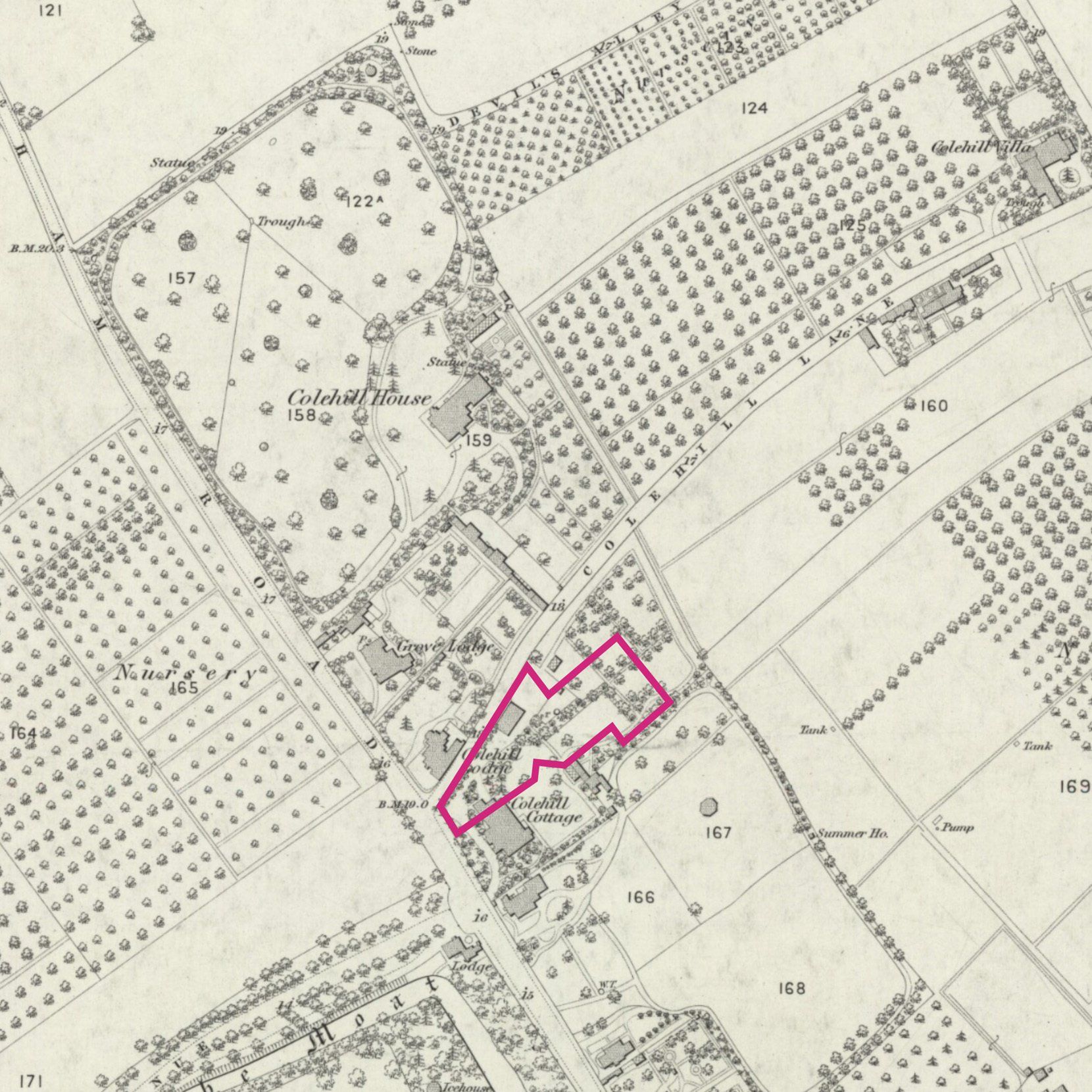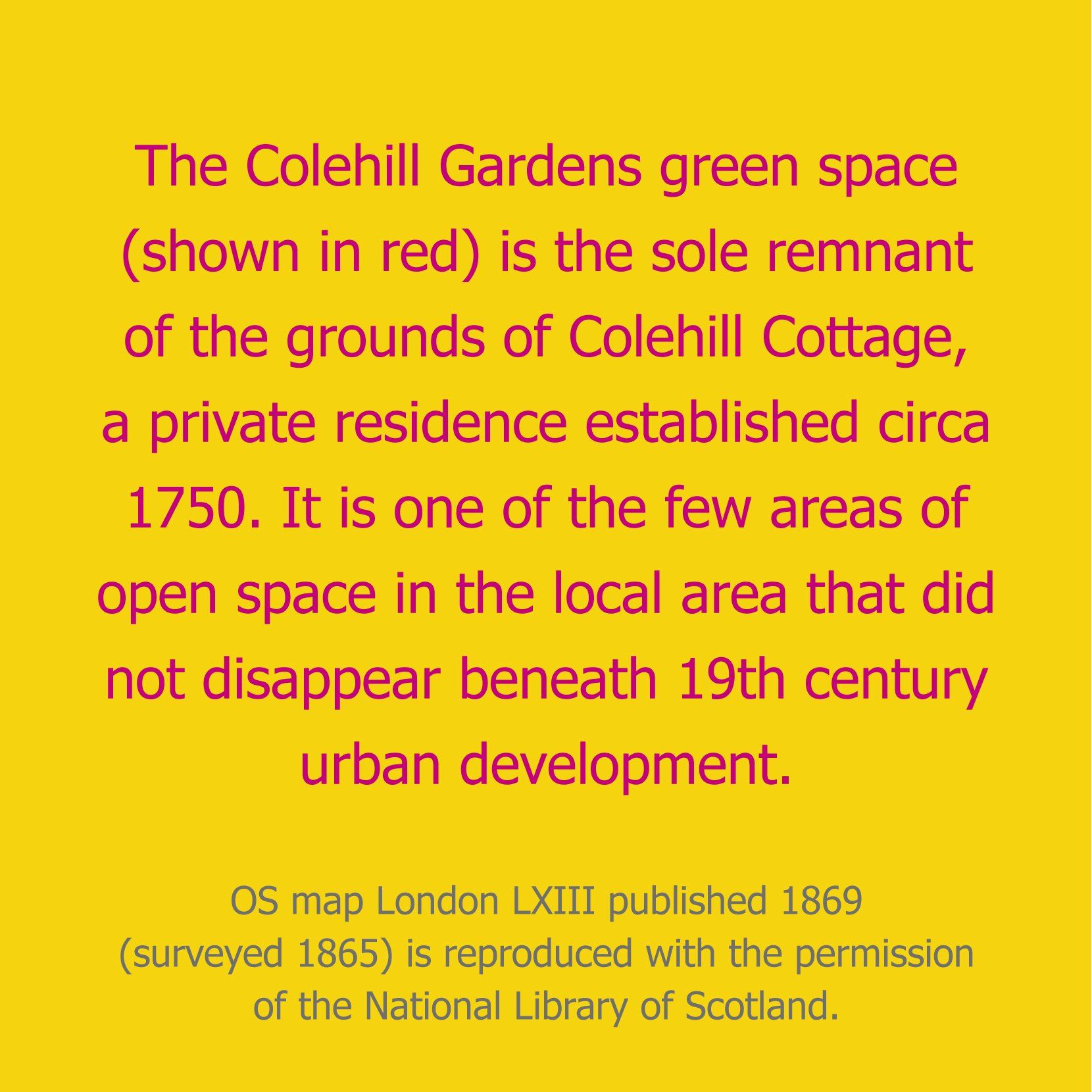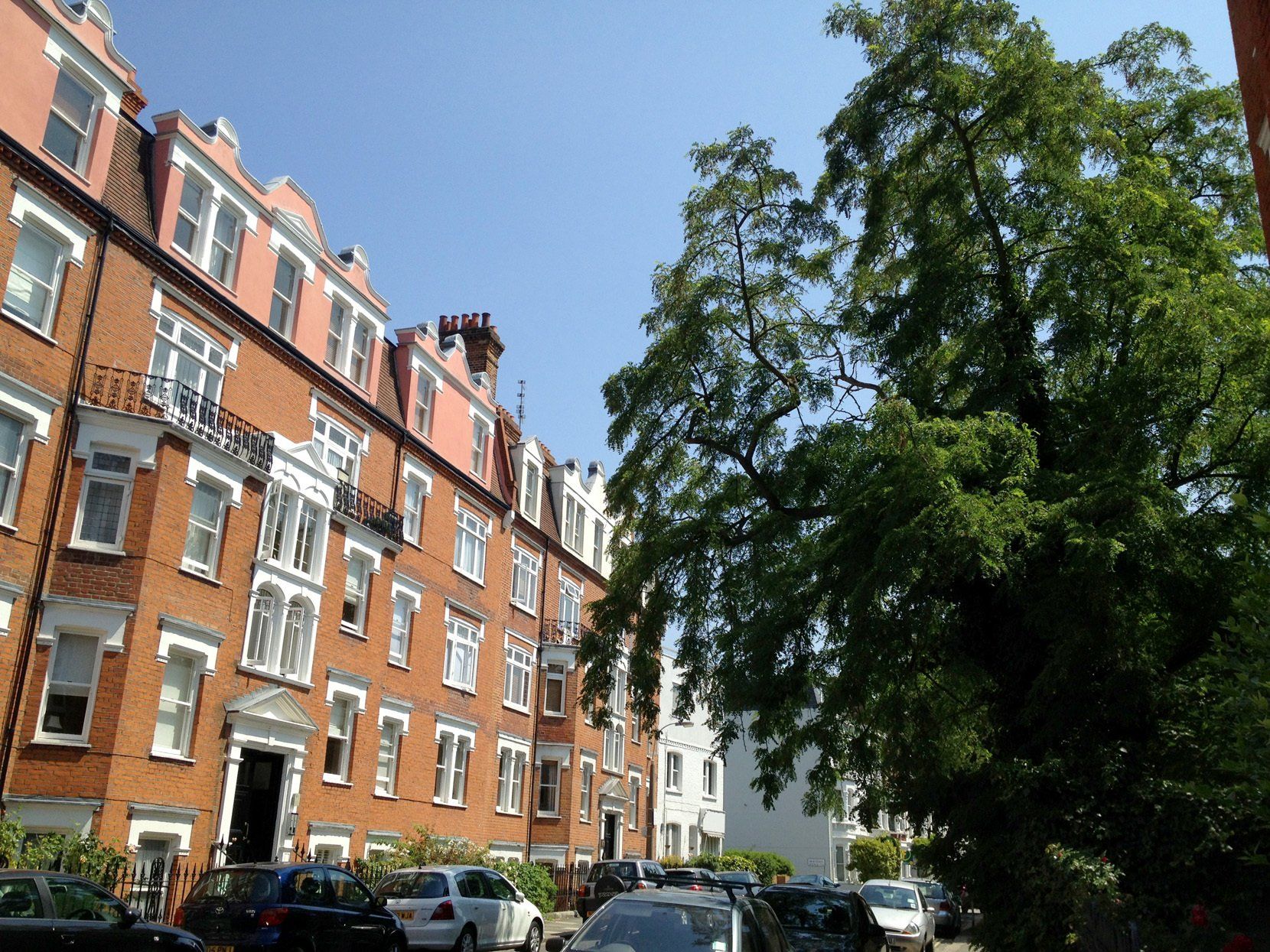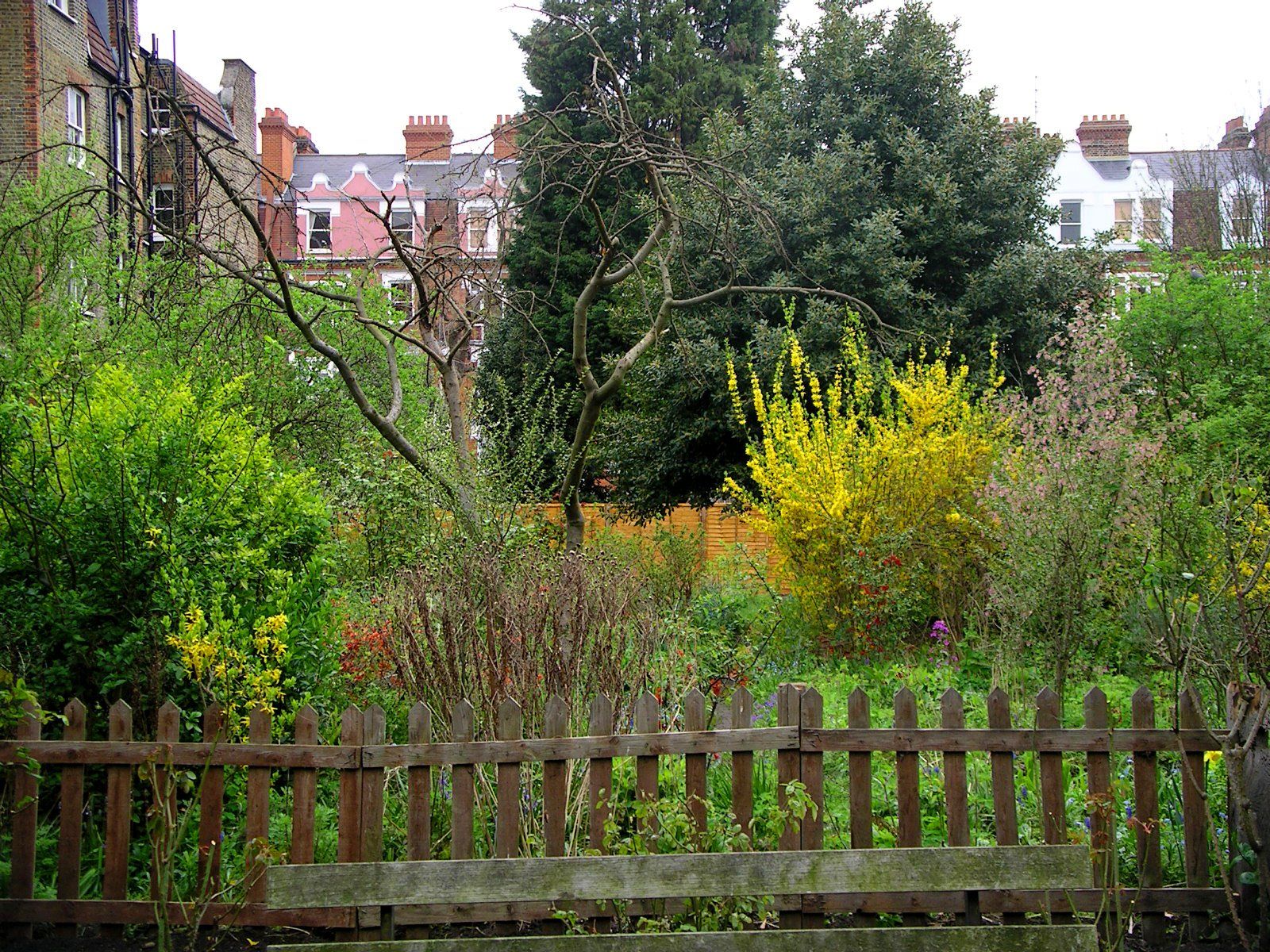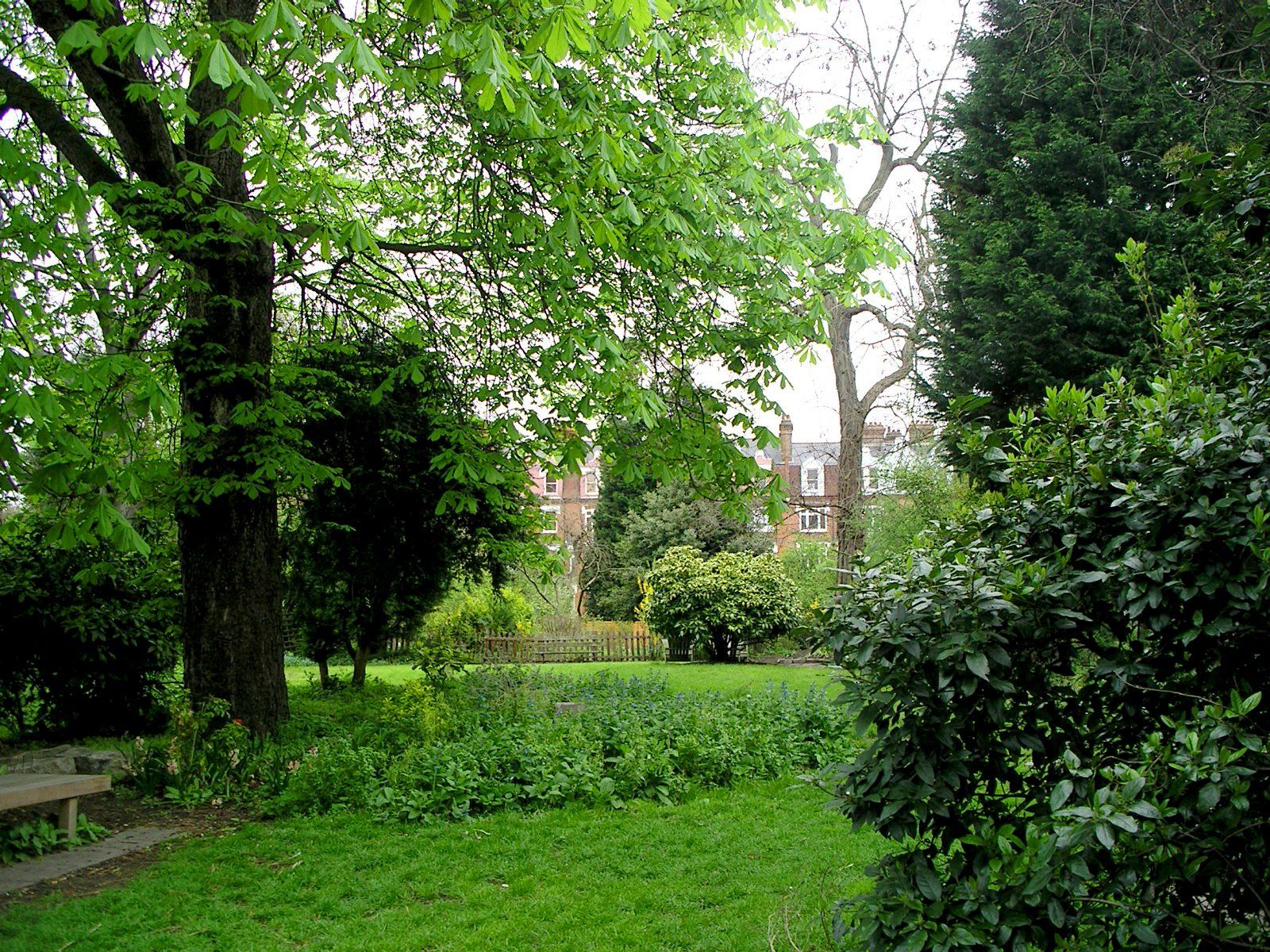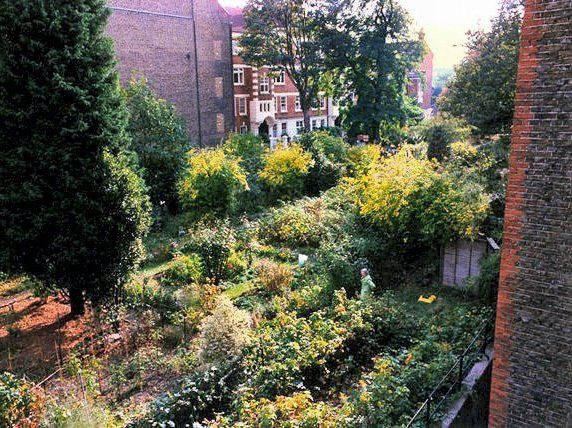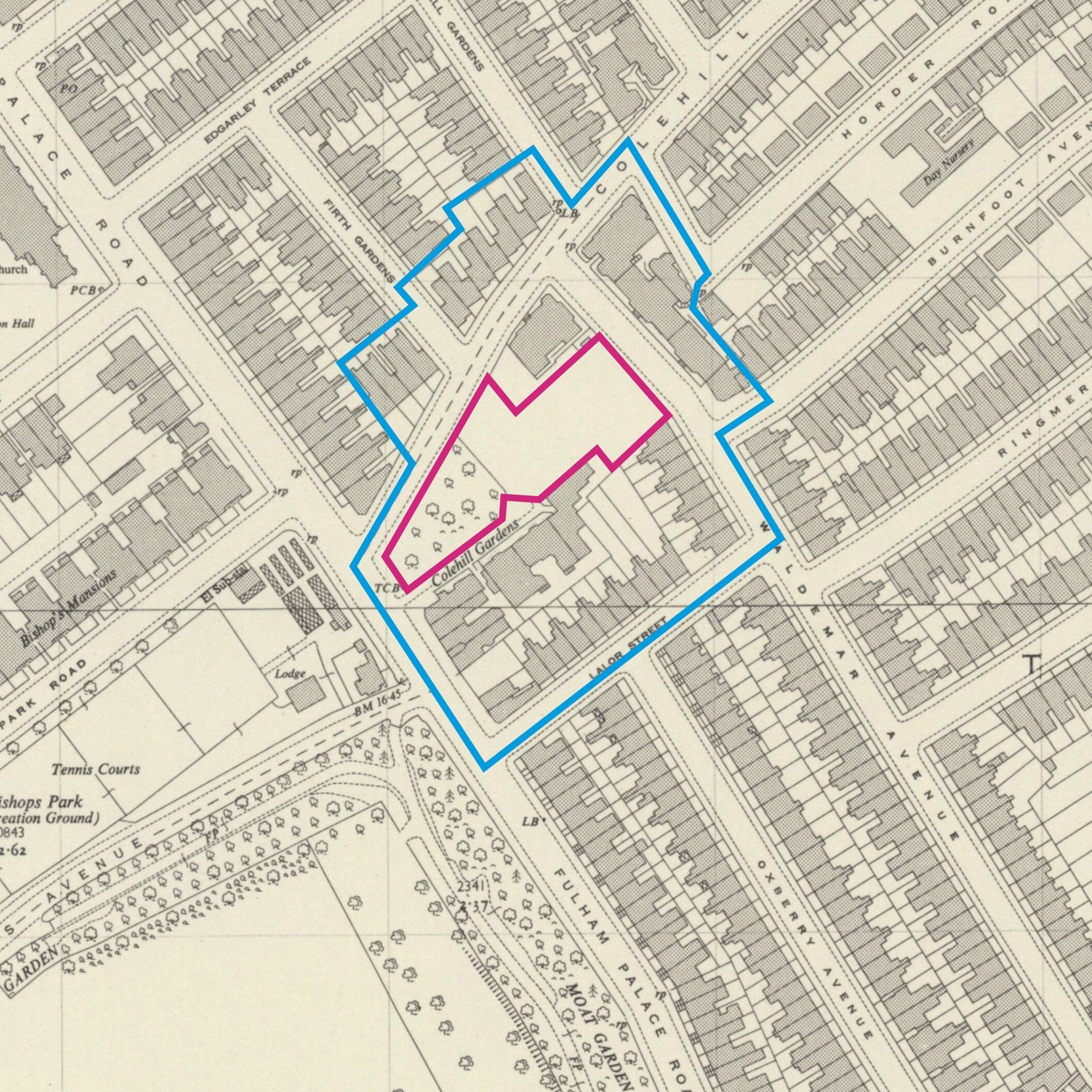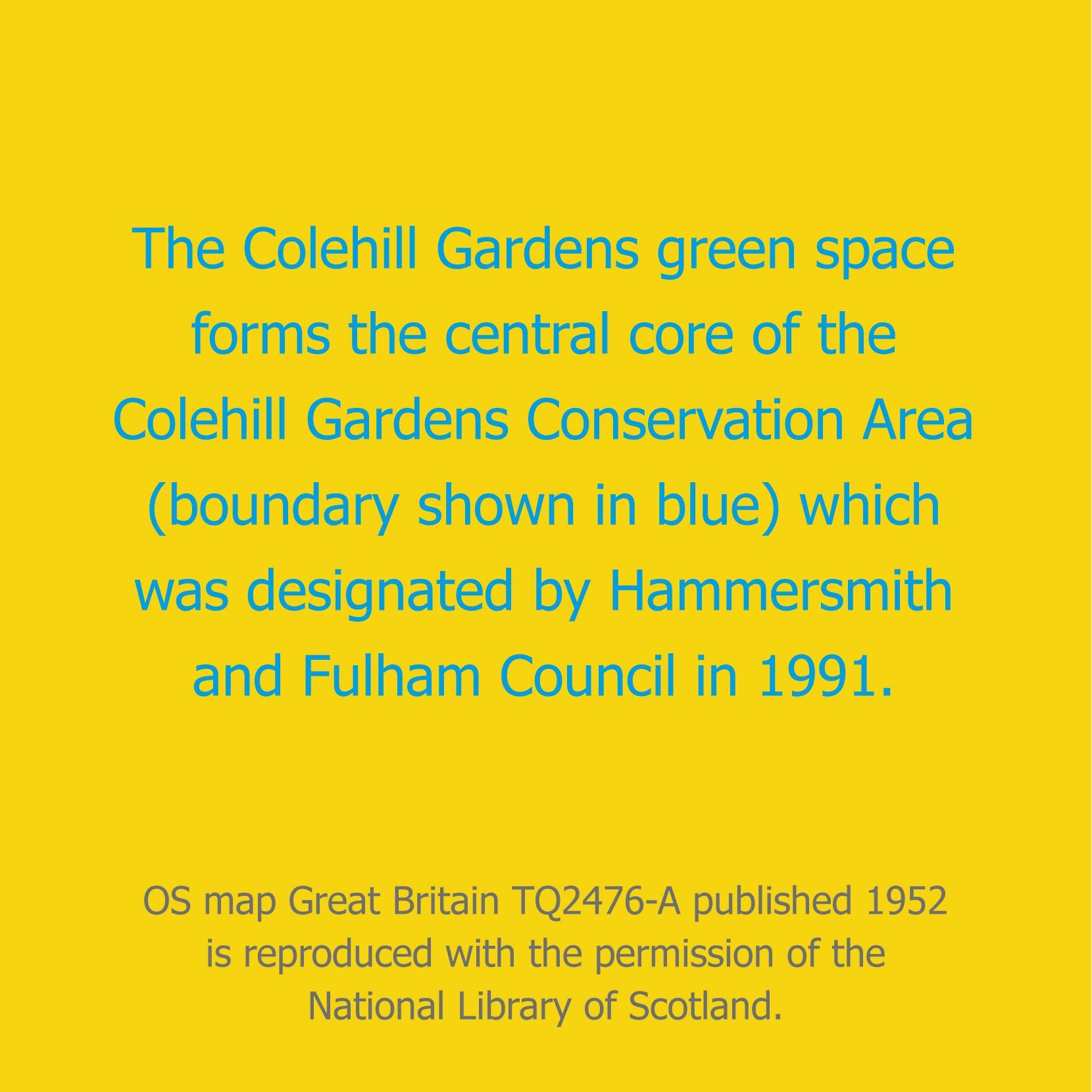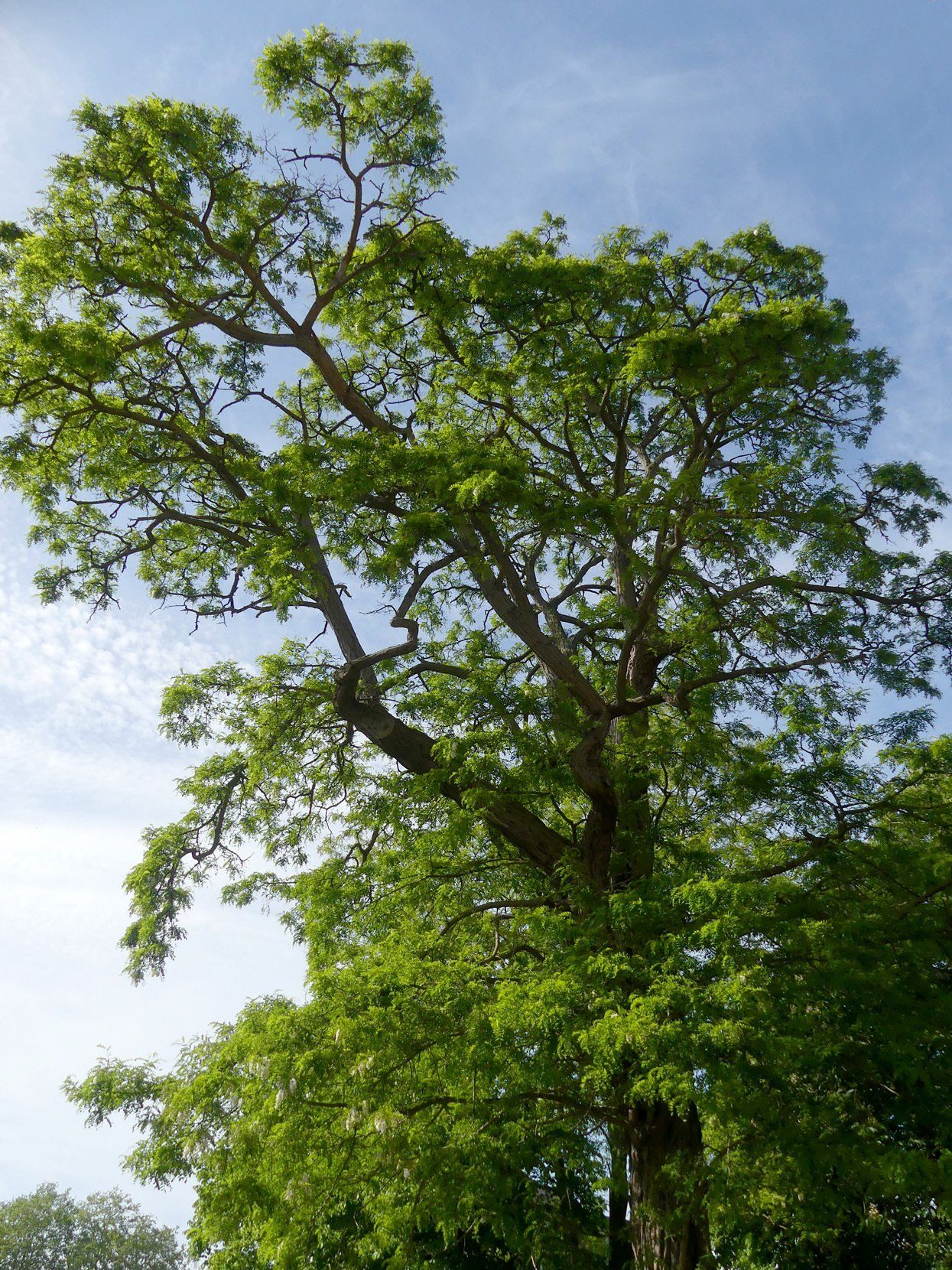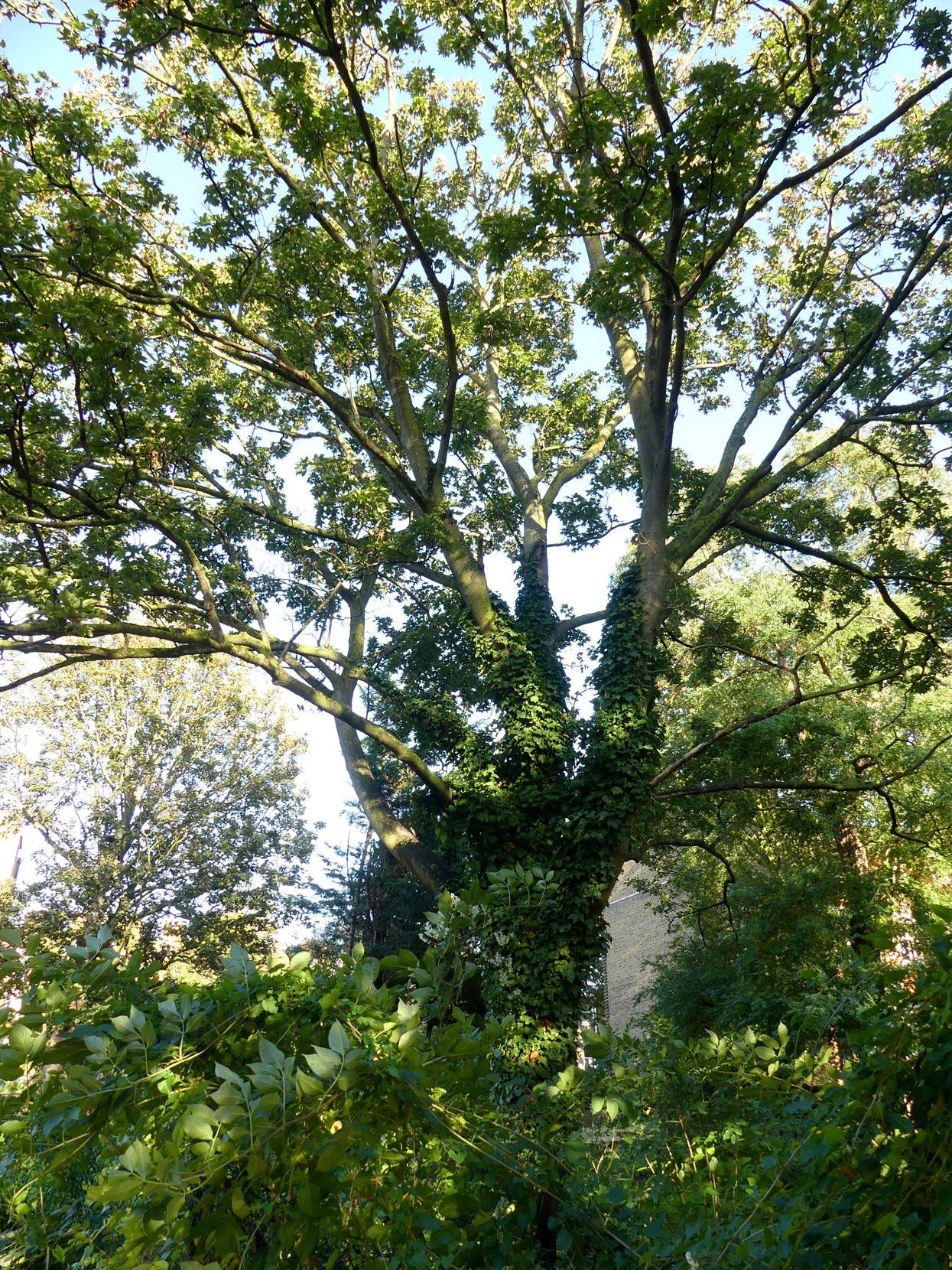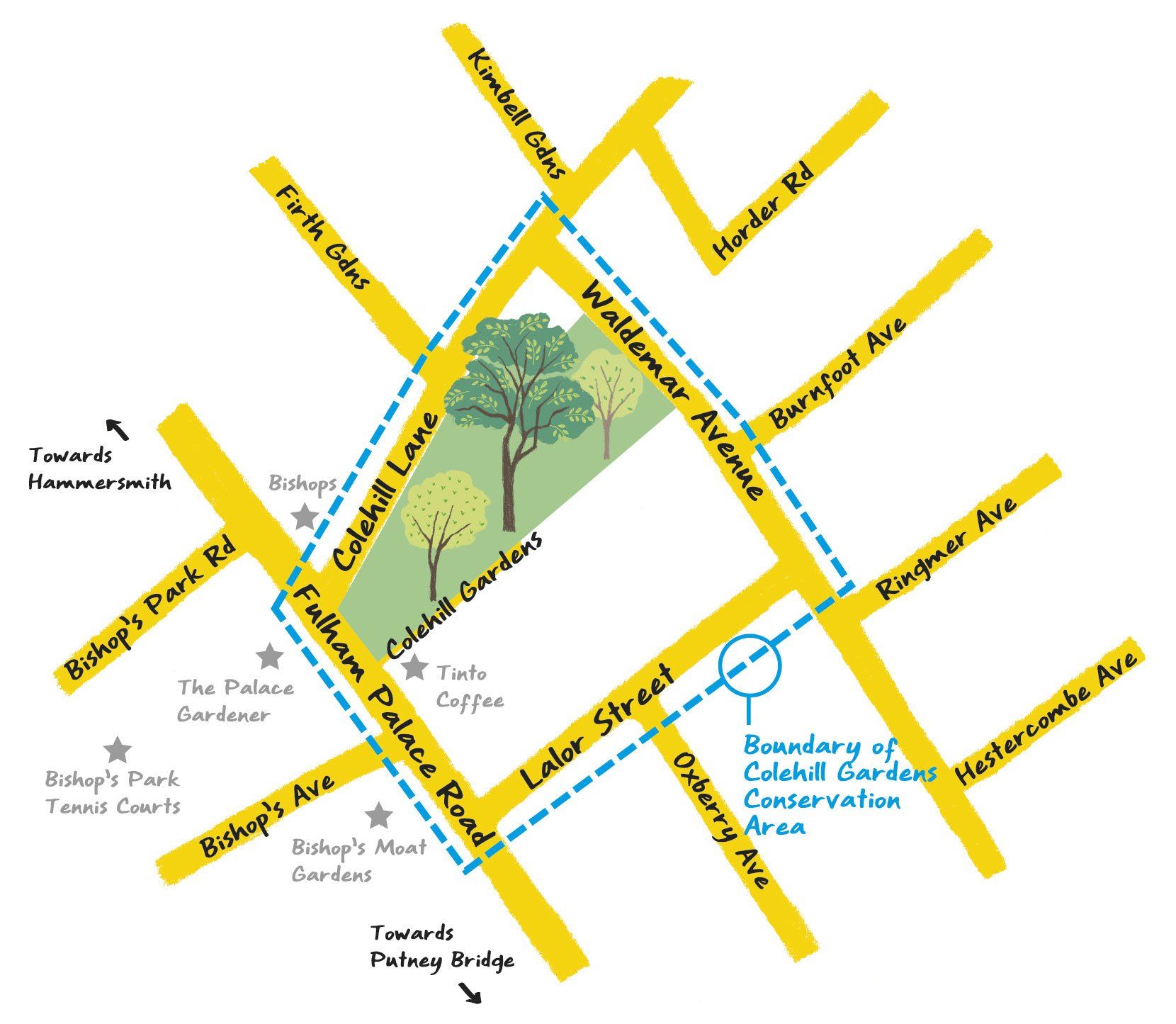THE SIGNIFICANCE OF COLEHILL GARDENS IN FULHAM
A unique and attractive asset in the borough
The Colehill Gardens form a highly unusual semi-public area of green open space which adds significantly to the attractive appearance of this part of the borough. They offer passers-by views into and beyond a green area containing a number of mature trees and also create a welcome sense of openness in
contrast to the surrounding built-up urban street scene.
Fulham does not have those traditional London squares which create that special “London character” in other areas of the city but the visual impression of these gardens, bounded on three sides by period mansion blocks, could reasonably be described as a quasi-London square.
The central core of the Colehill Gardens Conservation Area
With clear views into the green open space enjoyed by passers-by from three different streets, the council has long regarded the gardens' effective “greening” of the local townscape as providing an important visual amenity value and an essential haven for wildlife.
On 13 March 1991, and following a series of planning applications, the council decided to protect the gardens for their visual amenity and biodiversity value by designating the central green space, the surrounding Victorian and Edwardian mansion blocks and “boundary” streets as the Colehill Gardens Conservation Area.
A pdf of the council’s designation minutes can be viewed in “Downloads” below. The council has also drafted a Character Profile for the Colehill Gardens Conservation Area. Please contact the council’s Planning department if you would like to see a copy of the draft.
Playing a crucial role in the “greenest borough in Britain”
The council has declared its aim to make Hammersmith and Fulham the greenest borough in Britain by improving air quality and promoting biodiversity. Amongst a wide array of measures, the council plans to: plant more trees and hedges, get people involved in making their streets greener, so that everyone can be proud of their neighbourhoods and create “green corridors” allowing free movement of wildlife.
The council acknowledged the importance of the Colehill Gardens green space to both the surrounding street scene and biodiversity when it designated the gardens, the Victorian and Edwardian mansion blocks and surrounding streets as the Colehill Gardens Conservation Area in 1991.
With serious climate change issues now at the fore, the role of Colehill Gardens as a means of helping to “green” the borough, encourage local wildlife and combat pollution is even more relevant and vital.
A designated heritage asset
The Colehill Gardens Conservation Area is a small but important designated heritage asset in Fulham. Its central core, the Colehill Gardens green space, is of particular historical interest as it is the sole remnant of the grounds of Colehill Cottage (established circa 1750) and is a rare survivor of the intensive urbanisation of Fulham.
In response to planning application Appeals in 2017, local residents commissioned a Built Heritage report from Jonathan Smith, Planning and Heritage consultant at CgMs (now RPS Heritage), to assess the significance of the Colehill Gardens Conservation Area as a designated heritage asset. He stated:
– “That there is no other open space that can be traced back to and still ‘read’ as the surviving elements of grounds of a minor residence of the pre-nineteenth-century urban expansion period elsewhere in the borough, increases the asset’s significance and, therefore, the weight afforded to its conservation.”
– “In summary, Colehill Gardens Conservation Area is a heritage asset of high (national) significance. Its character and appearance, and therefore its special interest, is most strongly determined by the presence of the Open Space. It is the Open Space, of which the Appeal Site forms nearly one quarter, that is the primary and crucial contribution to the Conservation Area’s significance.”
A pdf of the built heritage report can be viewed in “Downloads” below.
A VITAL HABITAT
The council have pledged to make the borough of Hammermith and Fulham “the greenest borough in Britain” and the Colehill Gardens green space plays its part in achieving this. Not only is it one of the borough’s “green lungs”, it is recognised as a visual asset to the densely built townscape and an important haven and corridor for wildlife.
With evidence of the damage being done to the natural environment and its dependent wildlife becoming more and more evident to all, protecting this green space from development and harmful management is now more vital than ever.
The gardens contain a wide variety of plant life including a number of middle-age and mature trees (some with Tree Preservation Orders) – False Acacia, Leyland Cypress, Sycamore, Bay, Elderberry, Pittosporum, Laburnum, Cherry – and until recently a number of smaller trees and many long-established shrubs which unfortunately were decimated in January 2019 through excessive and careless vegetation clearance.
Wildlife has thrived here down the years with the flora serving as an ideal habitat for a variety of perching, roosting, nesting and feeding birds and other animals.
These include: bats, stag beetles, butterflies, tawny owl, lesser spotted woodpecker, song thrush, mistle thrush, jay, robin, wren, blackcap, dunnock, blackbird, magpie, carrion crow, wood pigeon, great tit, blue tit, long-tailed tit, goldfinch, chaffinch, a pair of mallard ducks and squirrels.
Downloads:
Tree Preservation Order Map.pdf
PROTECTING FROM INAPPROPRIATE DEVELOPMENT
Current planning applications
We will keep you updated on future planning applications that affect the Colehill Gardens green space in the Planning Application section and News section.
History of planning applications
There have been numerous attempts to build on or develop parts of the green space since 1955, but to date – and despite four planning applications to build on a section adjacent to Waldemar Avenue since 2007 – it has thankfully remained free from building development and large-scale telecoms installations.
Local residents have been very active and vocal in objecting to inappropriate planning applications and welcomed the council’s refusals to grant permission.
Members will be kept informed of all future planning applications affecting the green open space of Colehill Gardens.
May 2020:
Application to install 1no. 20m high Phase 8 Monopole with a wraparound cabinet at the base; and associated ancillary works. (2020/01199/TEL56)
Refused Jul 2020
Jul 2016 (A):
Application for erection of a two-storey detached dwelling house with basement, lightwells; erection of a one-storey building with basement and front, rear and side lightwells to be used as community space at ground floor level and office space at basement level; associated landscaping, to include a multi-sensory garden space with kitchen garden, allotments and seating.
Refused Sep 2016, Appeal dismissed Mar 2018
Jul 2016 (B):
Application for erection of a two-storey detached dwelling house with basement and front, rear and side lightwells, with associated garden at front and rear.
Refused Sep 2016, Appeal dismissed Mar 2018
Jun 2010:
Application for erection of a single storey, plus basement, single dwelling house.
Refused Dec 2010, Appeal dismissed Apr 2011
Mar 2007:
Application for a five-storey plus basement building comprising 1no one bedroom self-contained flat and 8no two-bedroom self-contained flats, involving the provision of underground car and cycle parking and associated landscaping.
Refused Dec 2007, Appeal dismissed Dec 2008
Dec 1988:
Application for four three-storey houses with garages on Waldemar side. Rest of space to be public open space, communal gardens and allotments.
Refused Oct 1989, Appeal withdrawn 1990
Sep 1972:
Application for 20 two-person dwellings with warden’s accommodation and common room, at the allotment site, Waldemar Avenue, SW6.
Refused Jul 1973
Jan 1957:
Application for maisonettes and garages on a site between Waldemar Avenue and Colehill Lane, Fulham.
Refused Mar 1957, Appeal dismissed Sep 1957
Dec 1955:
Application for 22 maisonettes and 14 garages on the site between Waldemar Avenue and Colehill Lane.
Refused Jul 1956
Downloads:
Please see the Planning decision pdfs listed below for further information on refused planning applications and the reasons for refusal:
History of applications to fell the mature False Acacia tree on the Waldemar Avenue boundary
There have been a number of attempts to fell the beautiful and impressive False Acacia tree near the corner of Waldemar Avenue and Colehill Lane. It is a “landmark” tree that features prominently in the street and adds greatly to the “greening” of the townscape.
Each application has received objections from a significant number of local residents and has been refused by the council.
Feb 2018:
Application to fell a False Acacia tree, subject to a Tree Preservation Order.
Refused Apr 2018
Jul 2014:
Application to fell a False Acacia tree subject to Tree Preservation Order.
Refused Sep 2014, Appeal dismissed Dec 2015
Dec 2013:
Application to fell a False Acacia tree on frontage of Waldemar Avenue.
Refused Feb 2014
May 2013:
Application to fell a False Acacia tree (T12) subject to a Tree reservation Order.
Refused Jul 2013
Downloads:
Please see the Planning decision pdfs listed below for further information on refused planning applications and the reasons for refusal.
HISTORY OF COLEHILL GARDENS
Originally the grounds of Colehill Cottage
Prior to the mid-19th century much of Fulham was mainly undeveloped open space containing farmland, market gardens and nurseries. An 1869 Ordnance Survey map (surveyed 1865) shows Colehill Cottage and its grounds (established circa 1750) and neighbouring Little Colehill Estate which included Colehill House, Grove Lodge and Colehill Lodge in its extensive grounds (established circa 1771) surrounded by this undeveloped land.
By the end of the 19th century extensive urbanisation had taken place. The grounds of Little Colehill Estate completely disappeared beneath the urban development but the site of Colehill Cottage and grounds was largely spared. The Colehill Gardens green space occupies what was formerly the grounds of Colehill Cottage and importantly is the sole remnant of open space of a minor private residence that managed to avoid the intensive urbanisation of Fulham.
The Flew family’s contribution to the surrounding architecture
John Pearce Flew acquired the land upon which Colehill Gardens now sits in 1883. His building company Gibbs and Flew were renowned in Fulham and built over 2,000 homes including those in Chesilton, Radipole, Lilyville and Bishop’s Road. The company was known for its trademark leaf and flower plaster reliefs over doorways which were all slightly different for each house.
After the partnership dissolved the Flew family built a number of mansion blocks in the area including Waldemar Avenue Mansions (1901) and Colehill Gardens Mansions (1906) which border the Colehill Gardens green space and are listed as Buildings of Merit in the council’s Local Register.
Long-standing use as allotments and recreational gardens
In 1939 the gardens were part of the “Dig for Victory” campaign and during Flew Estate’s ownership the green space was used for two purposes:
– as allotments leased to local residents on the one-third portion at the centre of the site and the one-third portion
fronting Waldemar Avenue and:
– as ornamental gardens by residents of the surrounding mansions who had right of access for recreational use on the one-third portion of land fronting Fulham Palace Road.
Attempts to develop the green space
The Flew Estate applied to develop the green space several times from 1955 onwards but all applications were refused by the council.
In 1971 Flew Estate sold the one-third portion of land fronting Waldemar Avenue to Sir Ian Auld MacTaggart. MacTaggart Third Fund applied to build in 1988 but was refused by the council.
During this time Colehill Gardens continued to be used as recreational gardens and allotments leased to the public. However, in 2002 leasing to local residents for allotment use was abruptly stopped.
In 2005 MacTaggart Third Fund sold their one-third portion of land to Rajendra Kumar Agrawal (Ionic Developments). Ionic Developments applied to develop the land in 2007 and 2010 and were refused by the council and also refused on appeal. Both applications received strong local opposition.
This same portion of land fronting Waldemar Avenue was then sold again. Bruce-Gardyne made two applications to develop the land in 2016. Both applications were refused by the council and refused on appeal and also received very strong local opposition.
In 2016 Flew Estate sold their remaining land, the ornamental garden portion fronting Fulham Palace Road and the central allotments portion, to Whitegold Properties Ltd.
Please see Planning Applications in the Colehill Gardens section for further details on past planning applications.
Creation of the Colehill Gardens Conservation Area
Seeking to protect the green space from future inappropriate development, on 13 March 1991, the council designated the green space, the surrounding late Victorian and Edwardian mansion blocks and the boundary streets (Fulham Palace Road, Colehill Lane, Waldemar Avenue and Lalor Street) as the Colehill Gardens Conservation Area.
In the Proposed Boundary section of the 1991 Designation document the council stated:
– The proposed Conservation Area is centred on Colehill Gardens which is its focal point.
– Colehill Gardens is a unique and individual area of open space which has never been built on.
– Colehill Gardens acts as a valuable resource for wildlife.
The council also recognised that it is the green open space with its mature trees in conjunction with its setting within the surrounding late Victorian and Edwardian mansion blocks (listed as Buildings of Merit) and low rise Victorian terraces, that gives the Colehill Gardens Conservation Area its unique character and appearance.
In the Reasons for Designation section of the 1991 Designation document the council stated:
– Colehill Gardens is being designated as a Conservation Area in order to protect and enhance its character from any inappropriate development ...
– Any new development would result in the loss of open land used as allotments, containing trees the subject of Preservation Orders and an area worthy of nature conservation, to the detriment of the amenities of the residential area generally ...
– The mansion blocks are an important component of the setting of the conservation area and are in themselves of historical and architectural interest.
Protecting the garden’s mature trees
The mature trees on the green space are important elements of the Conservation Area due to their visual amenity and biodiversity value and so the council protected sixteen mature trees with tree preservation orders in 1984.
Since 2013 there have been many applications to fell a beautiful mature False Acacia tree – a prominent and visually impressive “landmark” tree on the Waldemar Avenue boundary. These received strong local objection and all were refused by the council.
Establishing the Friends of Colehill Gardens
In 2019 various local residents who had fought on many occasions to protect the green space from inappropriate development and prevent the felling of the mature False Acacia tree decided to set up a community group. The Friends of Colehill Gardens (a non-profit association) was formed to protect the gardens and campaign with a “big voice” in the event of future harmful planning applications.
LOCATION MAP

